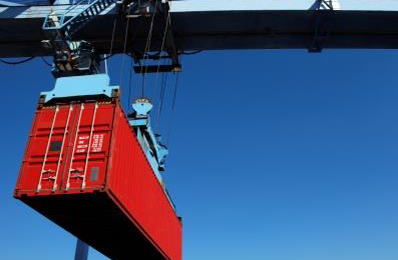
news
challenges in sea freight
Recommendations for exporters: corona pandemic reveals systemic flaws
As a result of the Corona pandemic, massive problems have been manifesting themselves in global sea freight transport since April 2020. Claudio Licci, our Director Sea Freight, reports on this and gives concrete recommendations for Swiss exporters.
While the difficulties at the beginning of the crisis were mainly limited to imports from Asia, today all trade lanes are under pressure: freight companies are struggling with undercapacity, overcrowded ports, congested container terminals and insufficient infrastructure.
Container ships are getting bigger and bigger and can already load up to 23,500 TEU (Twenty-Foot Equivalent Unit; standard container). When several ships of this dimension arrive at a seaport at the same time, it causes major logistical problems – even in “normal” times. The ports of Singapore and Los Angeles/Long Beach, for example, are often heavily congested due to the large volume of containers. Singapore is enormously important as a hub for the Southeast Asian and Australian markets; the two ports on California’s south coast handle about 40 per cent of US sea freight and are crucial for transpacific traffic. No wonder, the punctuality of ships has sunk to an all-time low: while 65 per cent of ships worldwide still arrived on time in the spring of 2020, a year later it was less than 35 per cent. Delays of up to six weeks – for example, on the route to China – are unfortunately no longer uncommon.
Pandemic-related cancellations
Due to the Corona pandemic, major terminals have repeatedly been cancelled in recent months. And there seems to be no sign of a turnaround: A fortnight ago, one of the world’s largest port facilities, that of Yantian in the southern Chinese city of Shenzen, was summarily closed after new Covid 19 infections were registered. Hundreds of container ships had to be diverted, causing delays of up to 14 days in imports and exports. Countries like India, Pakistan and Bangladesh are currently in a partial lockdown: although the ports are open, there is a lack of staff in the terminals. The situation is also worsening at the companies responsible for road transport because many truck drivers have dropped out. With the rising infection figures in Malaysia and Vietnam, there was bad news from Southeast Asia again this week.
Systemic deficiencies
The Corona pandemic has not only caused acute problems in sea freight, but has also brought to light a whole series of systemic deficiencies. Among the biggest challenges are the lack of container equipment as well as shipping space. In April 2020, 551 ships with a capacity of around 3 million TEU were decommissioned. After the shipowners put these ships back into service, the corresponding capacities were available to the market again in the fourth quarter of last year. But because almost all companies around the globe are expanding their inventories – and because consumption has already picked up strongly again – demand far exceeds the supply of shipping space. As a result, waiting times of four to five weeks often have to be accepted. The major trade lanes to the USA and Asia are particularly affected by these delays. The situation has been further aggravated by the blockade of the Suez Canal, which has led to delivery delays of 20 days. The “Ever Given” of the Evergreen shipping company is still out of service after being seized by the Egyptian authorities; the 20,000 TEU of this ship are missing in imports and exports.
Rising prices
In the short and medium term, not much will change in terms of capacity – which is why the shipping companies shy away from making clear forecasts. The fact is that the shipping companies regulate the available space better today than ever before. And it is also clear that additional containers or more ships would further strain the already precarious infrastructure of many ports. It is therefore not surprising that freight rates in all trade lanes have climbed to new highs. And prices will continue to rise sharply: Especially for sea freight to the USA and South America, massive increases must be expected in July.
Cautious outlook
The problems mentioned above will accompany international sea freight traffic for some time to come. Experts agree that the situation will not change before the end of the year and may even persist until after the Chinese New Year (1. 2. 2022). The reasons for this less optimistic outlook are manifold:
- Q3 and Q4 are considered the strongest quarters of the year in the retail sector. Not only is Golden Week in China (1-7 October 2021) just around the corner, but also the year-end spurt (imports and exports for the 2021 Christmas trade have already begun).
- Consumer sentiment is already very good again in the USA and Asia and is also picking up in Europe.
- The economic stimulus programmes launched by various countries will tie up large transport capacities.
- The existing overflow of containers to be transported must be reduced in the coming months before conditions return to normal.
There is justified hope that the situation on the labour market will also ease with the progress of the vaccination programmes in the individual countries. As soon as port workers and truck drivers can resume their work and carry it out without major restrictions, the market will gradually return to normal. Meanwhile, prices for sea freight will remain at a high level.
Possible alternatives
Although the Northeast Passage is navigable between June and December, it is not used by international sea freight traffic – with very few exceptions. The main reasons for this are the lack of safety (shallow draught!) and the lack of infrastructure along the route, but mainly considerations of a political and ecological nature. A valid alternative would be rail transport from Asia to Europe – but here, too, capacities are booked up for weeks. In addition, prices in this segment quickly adjust to those of sea freight. Because overseas passenger flights are still rare, there is also a lack of capacity in air freight – although more and more cargo aircraft are being used. While prices for air freight to Asia have more or less settled at pre-Corona levels, rates for shipments to the USA or South America are now around three times higher than before the pandemic.
Key recommendations
- Talk to your customers and suppliers: This will enable you to organise your transports in good time.
- Plan much longer lead times: Short-term bookings are now practically impossible or a matter of pure luck.
- Talk to your freight forwarder in good time: Good forecasts help them to book the space they need in good time.
- Check possible options: Do not always run your transports via the northern ports – the southern ports are a good alternative.
(This article was published on the webpage of Switzerland Global Enterprise.)

